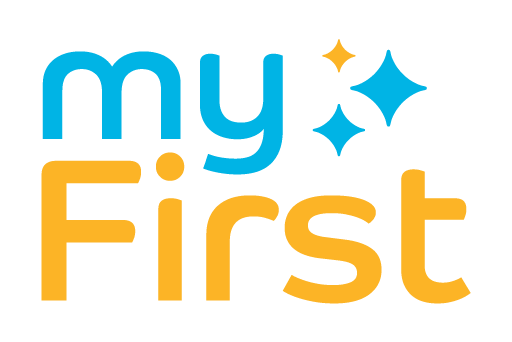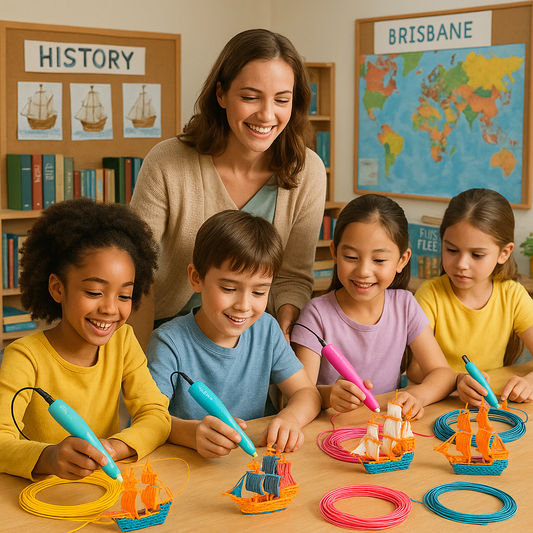G’day, Aussies! If you’re after a fun, creative way to keep the kids entertained or unleash your own artistic flair, the myFirst 3D Pen Make is a top pick. This nifty gadget transforms simple drawings into stunning 3D objects, making it perfect for everyone from little tackers to grown-ups. It’s safe, user-friendly, and ideal for sparking imagination during school holidays, rainy afternoons in Sydney, or relaxed weekends in the Outback. Whether you’re crafting a mini Uluru or a surfboard, this pen brings your ideas to life.
Why the 3D Pen Make Is a Hit in Australia
Let’s kick things off by exploring why the myFirst 3D Pen Make is so popular Down Under. Designed with kids in mind but enjoyable for all ages, it uses low-heat, non-toxic PCL filaments that are safe to touch and harden quickly. The pen is wireless, so you can create it anywhere whether you’re in a classroom in Perth, a beach house in Queensland, or a bush camp in the Northern Territory. It’s also a fantastic tool for STEM learning, helping kids develop fine motor skills, spatial thinking, and creativity. Plus, it’s mess-free, so you won’t be scrubbing sticky residue off the kitchen table. From crafting Aussie icons to school projects, this pen is a versatile addition to any household, making it a favourite for families and educators alike.
What’s in the Box?
When you open your myFirst 3D Pen Make kit, ensure you have everything you need to start creating:
- 3D Pen Make: The main tool, lightweight and easy to hold.
- USB Charging Cable: For powering up the pen’s built-in battery.
- PCL Filament Refills: Lots of bright colours to start with, like coral, eucalyptus green, or sunny yellow.
- Template Booklet: Full of fun designs like animals, accessories, and Aussie-inspired shapes.
- User Manual: Your guide for setup and fixing issues.
If something is missing, contact the myFirst team or check their website for help. Having all these components ensures you’re ready to dive into the creative process without any hiccups.

Step-by-Step Guide to Using Your 3D Pen Make
1. Charge It Up
The 3D Pen Make is cordless, running on a rechargeable battery, so you don’t need to stay near a power point. This is perfect for taking it to the park, a friend’s place, or even a road trip across the Nullarbor.
- Plug the USB cable into the charging port on the pen, usually near the back. Check the manual for the exact spot.
- Connect the other end to a 5V, 1A, or 2A adapter, like your phone charger, or a USB port on your laptop or power bank.
- Let it charge until the indicator light shows it’s fully charged. The manual will explain what the light means, like solid green for full. It’s quicker than waiting for a meat pie to heat up at the servo!
- A full charge gives you heaps of crafting time, so you can create without stopping.
Charging is straightforward, but ensuring the pen is fully powered before starting will save you from interruptions mid-creation.
2. Load the Filament
The pen uses 1.75mm PCL filaments, which are safe, non-toxic, and cool down fast, making them ideal for kids and beginners.
- Choose a filament colour from the pack. Pick something bold, like ocean blue or desert red, for that Aussie vibe.
- Slide the filament into the loading hole at the back of the pen until it stops. Keep it straight, or it might jam like a kangaroo stuck in a fence.
- Tip: Only use myFirst-approved PCL filaments. Other materials could break the pen or be unsafe, and you don’t want to ruin your new toy.
- If you’re switching colours, unload the old filament first, more on that later, to avoid a messy mix.
Proper filament loading is key to smooth operation, so take your time to get it right.
3. Switch It On and Warm It Up
- Press and hold the power button to start the pen. The indicator light will flash to show it’s warming up.
- Wait a few seconds for the pen to reach the right temperature for PCL filament, about 60 degrees Celsius. The light will change, check the manual for details, to show it’s ready.
- The pen keeps heat inside, so the tip stays cool enough to touch. Still, don’t press it against your skin, just to be safe. Better safe than sorry!
- If the pen doesn’t heat up, check it’s charged and the power button is working.
This step ensures the pen is ready to extrude filament smoothly, setting you up for successful crafting.
4. Start Creating
Now for the fun part, bringing your ideas to life! The 3D Pen Make lets you draw on flat surfaces or straight into the air to make 3D shapes.
- Press the loading button to start the filament flowing. Hold it for a steady stream or double-click for automatic flow, great for long lines.
- Begin by tracing on a flat surface, like the templates in the booklet. They’re perfect for learning how to control the pen’s flow.
- If your pen has a speed slider, use it to adjust the flow. Go slow for detailed work, like a koala’s face, or fast for big shapes, like a footy oval.
- To build 3D structures, draw a flat base first, then stack layers on top. PCL hardens in seconds, so each layer will be solid before you add the next. Once you’re confident, try drawing into the air to sculpt shapes like a boomerang or a wave.
- Don’t worry if your first tries look a bit rough. Practice makes perfect, and even wobbly creations are cool!
This stage is where your creativity starts to shine, and the templates provide a great starting point for beginners.
5. Take a Break or Wrap Up
- To pause, release the loading button or double-click to stop the filament.
- To unload the filament, press the unload button, check the manual for the exact button, and gently pull the filament out once it’s released. Don’t pull hard, or you might damage the pen.
- When you’re done, hold the power button to turn off the pen. It’s as simple as turning off a light.
- If you’re taking a break, store the pen somewhere safe, away from curious pets or sticky hands.
Knowing how to pause and stop properly keeps your pen in good condition for future use.
6. Tidy Up
One of the best things about the 3D Pen Make is how easy it is to clean up.
- PCL filament doesn’t stick, so any extra bits or mistakes can be peeled off surfaces like paper, templates, or your desk. No scrubbing needed!
- Store the pen and filaments in a cool, dry place, especially if you’re in humid areas like Cairns or Darwin, to keep them in good shape.
- If you’re crafting with kids, make sure they don’t leave filament scraps around for the dog to chew.
A quick tidy-up ensures your workspace stays neat and your pen is ready for the next session.

Explore Our 3D Pen Collection
Want to make your 3D Pen Make experience even better? Visit our collection page at myFirst 3d Pen Collection for a great range of accessories. You’ll find vibrant PCL filament packs in colours that scream Australia, like Bondi blue, outback red, and rainforest green. We also have refill kits to keep you creating for ages. Whether you’re in Adelaide, Alice Springs, or anywhere else, our collection has everything you need for school projects, gifts, or just a fun afternoon at home.
This first part of our guide has set you up with everything you need to start using the myFirst 3D Pen Make. From charging and loading filaments to creating your first 3D shapes, you’re now ready to explore the creative possibilities. Stay tuned for Part 2, where we’ll share tips, project ideas, and troubleshooting advice to take your creations to the next level. Grab your 3dPen Make, pick a colourful filament, and start crafting today!
For more details, check out the 3dPen Make user manual.




